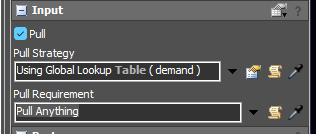Hello,
We are trying to simulate a demand, and have defined a condition in the sink (on entry):
gettablenum(label(current,"ItemCounts"),item.Type,1)>=gettablenum("demand",CurrentHour+1,item.Type)
The values of both sides of the condition are going good but then the port is not closed as needed. The variables affecting the condition are also correct and we do not know why the port is closing when the "demand" table has not reach all the units.
I attach the model in case you can give me a hand: Warehouse.fsm
Thanks,


